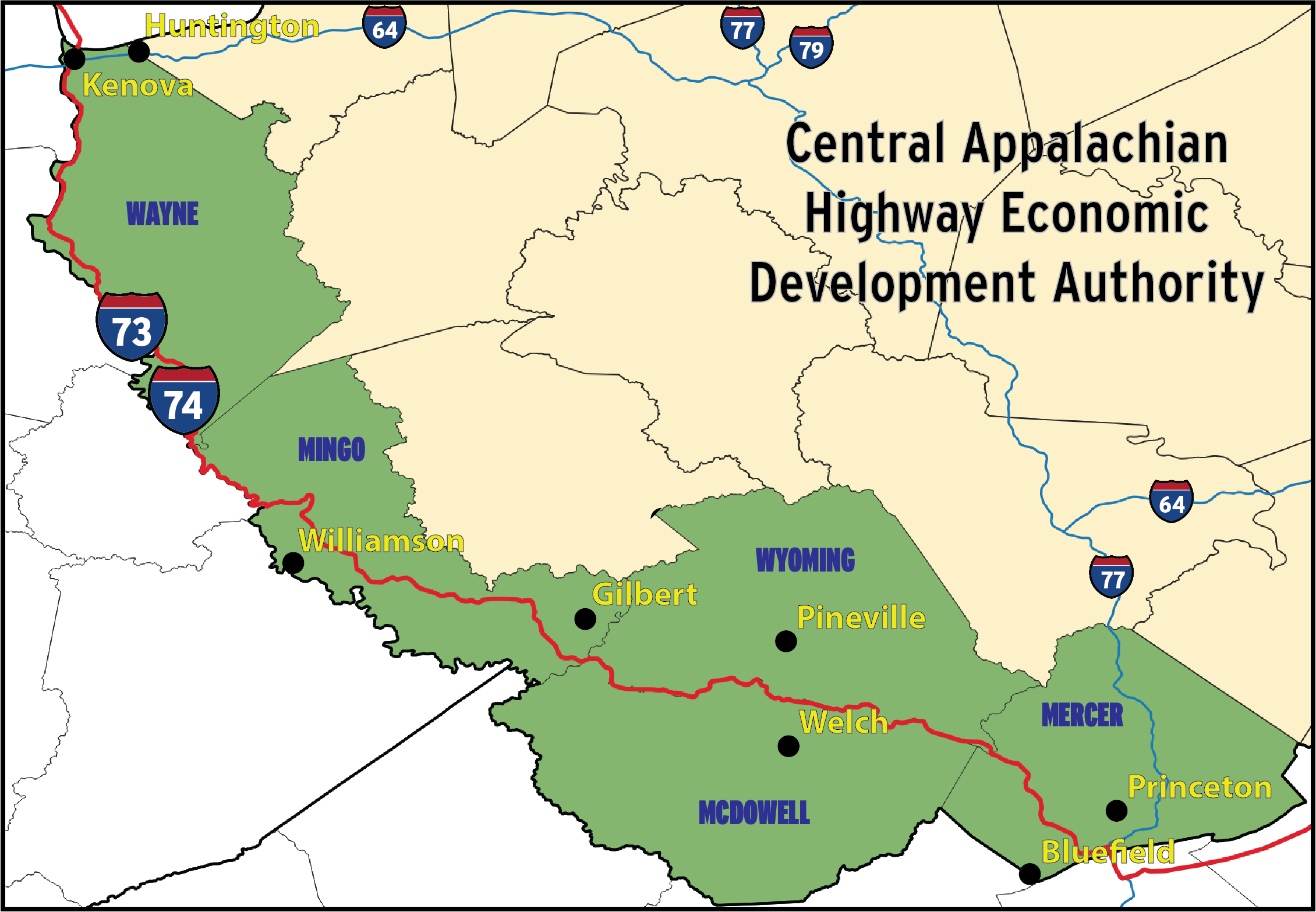I-73/74 Corridor
Aligning Efforts for Energy-Driven Economic Growth in West Virginia’s Corridor Counties
The economic development agencies along this corridor are aligning efforts to embrace the expansion of the energy policies adopted by the West Virginia Legislature as a tool for economic development. To help ensure success, the counties of Mercer, McDowell, Mingo, Wayne, and Wyoming (the aligned Corridor Counties) are forming a strong working group to articulate a resolute vision and clear strategies to facilitate the desired economic developments. This effort builds on recent momentum in sustainable economic and energy development in the state and region
With passage of SB 354, Governor Justice and the legislature created the West Virginia Advanced Energy and Economic Development Authority (now known as the Central Appalachian Highway Economic Development Authority) and authorized the Authority to:
- Outline specific tactical goals and demonstrable objectives via input from member counties.
- Connect with legislature to assist in maintaining an inclusive, rather than constraining, geographic focus. The rural nature of the region will likely necessitate reaching beyond the strict alignment of the corridor, ensuring that impacts are broad and sustainable for communities poised to benefit from these initiatives.
- Seek out Private-Public Partnerships (P3’s) to achieve its vision.
- Build broad support with groups in other states that follow the I-73/74/75 alignment.
- Seek governmental engagement for guidance on local, state, regional or national initiatives to achieve economic development objectives.
- Utilize cutting-edge technologies and innovation platforms where their application is most beneficial.
- Develop an MOU with the Appalachian Regional Commission (ARC) in areas of economic development, transportation, tourism, etc.
- Develop a tourism asset portfolio for inclusion of the organizational vision.
- Allow regulatory flexibility along the corridor for economic advancement, growth and development.
- Seek guidance from State officials to utilize bonding and tax credits as necessary to fulfill the objectives of the legislation and region.

